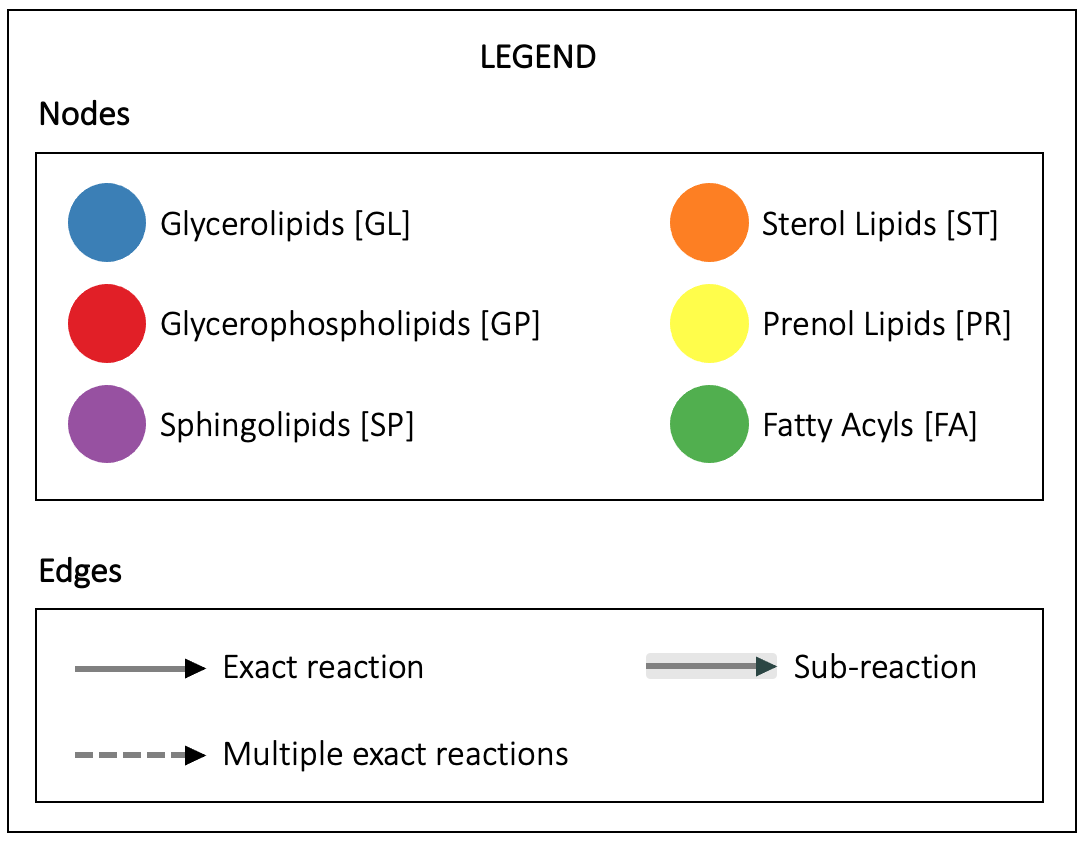Structure Database (LMSD)
Common Name
PC(12:0/12:0)
Systematic Name
1,2-didodecanoyl-sn-glycero-3-phosphocholine
Synonyms
- Dilauroyl phosphatidylcholine
- 1,2-dilauroyl-sn-glycero-3-phosphocholine
- 1,2-didodecanoyl-sn-phosphatidylcholine
- 1,2-Didodecanoyl-sn-glycero-3-phosphocholine
- 1,2-Dilauroyl-L-phosphatidylcholine
- 1,2-Dilauroyl-sn-3-phosphatidylcholine
- PC(24:0)
- PC(12:0_12:0)
LM ID
LMGP01010429
Formula
Exact Mass
Calculate m/z
621.436955
Sum Composition
Abbrev Chains
PC 12:0_12:0
Status
Curated
3D model of PC(12:0/12:0)
Please note: Where there are chiral atoms but the stereochemistry is undefined, the 3D model takes an arbitrary conformation
Classification
Category
Main Class
Sub Class
Biological Context
1,2-Dilauroyl-sn-glycero-3-PC (1,2-DLPC) is a phospholipid containing the medium-chain (12:0) lauric acid inserted at the sn-1 and sn-2 positions. It is commonly used in the generation of micelles, liposomes, and other types of artificial membranes.1,2,3 Experimentally, 1,2-DLPC is used to form thinner membranes than those produced with PC containing the more common long-chain or very long-chain fatty acids, or to simply vary membrane formulation.3,4
This information has been provided by Cayman Chemical
References
Reactions
Filter by species:
ⓘ
Reactions are shown if the E.C. number of the enzyme catalysing it is annotated in the UniProt database for a species belonging to the selected taxonomic class.
Click on an edge to display the reaction(s).

String Representations
InChiKey (Click to copy)
IJFVSSZAOYLHEE-SSEXGKCCSA-N
InChi (Click to copy)
InChI=1S/C32H64NO8P/c1-6-8-10-12-14-16-18-20-22-24-31(34)38-28-30(29-40-42(36,37)39-27-26-33(3,4)5)41-32(35)25-23-21-19-17-15-13-11-9-7-2/h30H,6-29H2,1-5H3/t30-/m1/s1
SMILES (Click to copy)
[C@](COP(=O)([O-])OCC[N+](C)(C)C)([H])(OC(CCCCCCCCCCC)=O)COC(CCCCCCCCCCC)=O
Other Databases
Calculated Physicochemical Properties
Heavy Atoms
42
Rings
0
Aromatic Rings
0
Rotatable Bonds
32
Van der Waals Molecular Volume
658.03
Topological Polar Surface Area
111.19
Hydrogen Bond Donors
0
Hydrogen Bond Acceptors
9
logP
8.92
Molar Refractivity
169.41
Admin
Created at
-
Updated at
25th Apr 2022
LIPID MAPS® abbreviations for glycerophospholipids (GP)
The LIPID MAPS® glycerophospholipid abbreviations (PC, PE, etc.) are used here to refer to species with one or two radyl side-chains where the structures of the side chains are indicated within parentheses in the 'Headgroup(sn1/sn2)' format (e.g. PC(16:0/18:1(9Z)). By default, R stereochemistry at the C-2 carbon of glycerol and attachment of the headgroup at the sn3 position is assumed. Also, acyl chains are assumed by default. The 'O-' prefix is used to indicate the presence of an alkyl ether substituent e.g. PC(O-16:0/18:1(9Z)), whereas the 'P-' prefix is used for the 1Z-alkenyl ether (Plasmalogen) substituent e.g. PC(P-16:0/18:1(9Z)).
For molecules with opposite (S) stereochemistry at C2 of the glycerol group and attachment of the headgroup at the sn1 position, the stereochemistry specification of [S] is appended to the abbreviation. The 'Headgroup(sn3/sn2)' abbreviation format is used.
For molecules with unknown stereochemistry at the C-2 carbon of the glycerol group, the stereochemistry specification of [U] is appended to the abbreviation and the structure is drawn with C-2 stereochemistry unspecified.
The LIPID MAPS® glycerophospholipid abbreviations (PC, PE, etc.) are used here to refer to species with one or two radyl side-chains where the structures of the side chains are indicated within parentheses in the 'Headgroup(sn1/sn2)' format (e.g. PC(16:0/18:1(9Z)). By default, R stereochemistry at the C-2 carbon of glycerol and attachment of the headgroup at the sn3 position is assumed. Also, acyl chains are assumed by default. The 'O-' prefix is used to indicate the presence of an alkyl ether substituent e.g. PC(O-16:0/18:1(9Z)), whereas the 'P-' prefix is used for the 1Z-alkenyl ether (Plasmalogen) substituent e.g. PC(P-16:0/18:1(9Z)).
For molecules with opposite (S) stereochemistry at C2 of the glycerol group and attachment of the headgroup at the sn1 position, the stereochemistry specification of [S] is appended to the abbreviation. The 'Headgroup(sn3/sn2)' abbreviation format is used.
For molecules with unknown stereochemistry at the C-2 carbon of the glycerol group, the stereochemistry specification of [U] is appended to the abbreviation and the structure is drawn with C-2 stereochemistry unspecified.